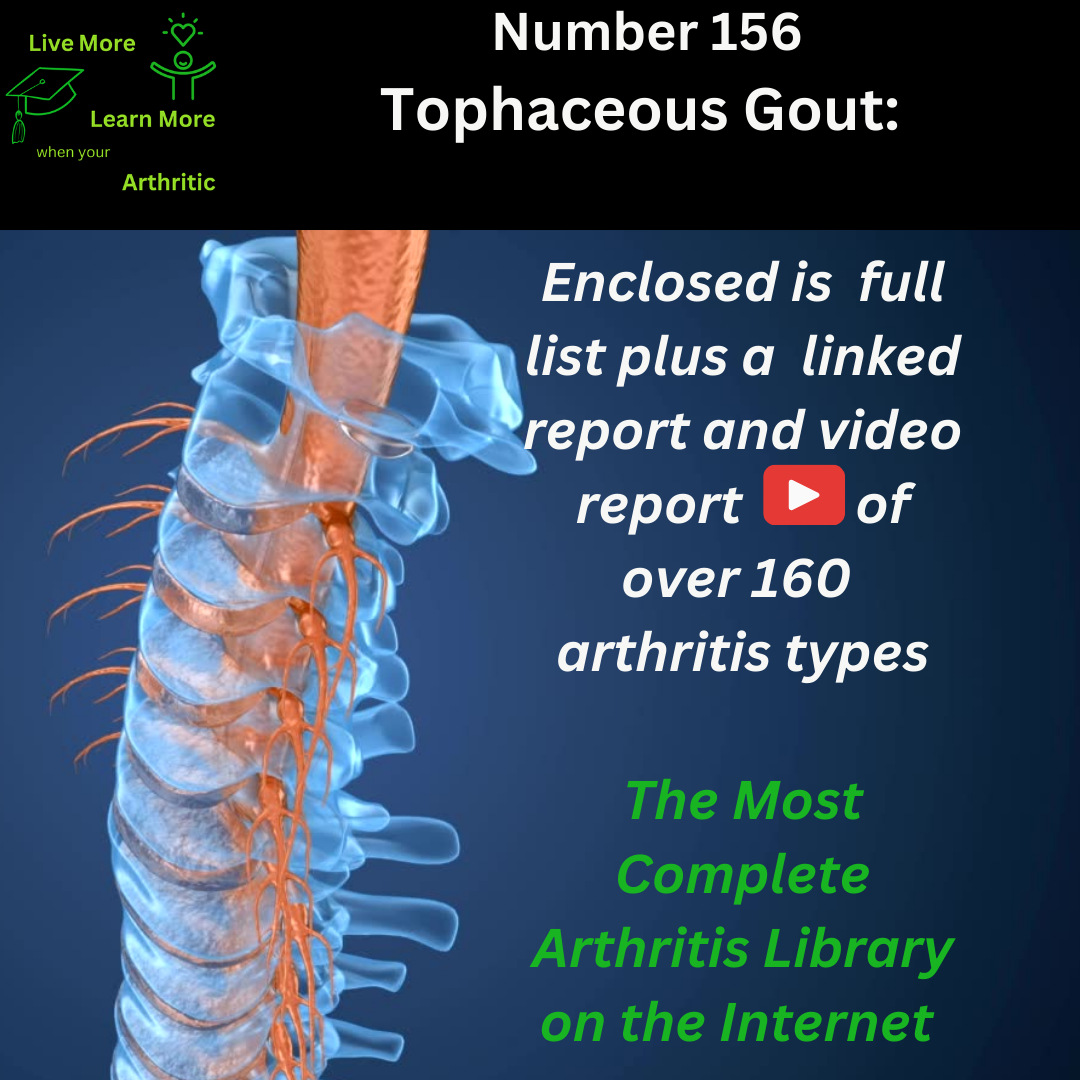
Tophaceous Gout: Number 156 Types of Arthritis
Understanding Tophaceous Gout and Its Comorbidities
Tophaceous Gout, a severe form of Gout characterized by the deposition of uric acid crystals (tophi) in joints and soft tissues, can overlap with other forms of arthritis, notably Osteoarthritis (OA) and Rheumatoid Arthritis (RA). Although distinct in pathophysiology, these conditions can coexist, complicating diagnosis and treatment.
The comorbidity between Tophaceous Gout and OA or RA presents challenges due to shared symptoms and joint manifestations. Tophi formation and chronic inflammation can mimic features of other arthritic conditions, requiring comprehensive evaluation for accurate diagnosis and management.
Inflammatory Nature of Tophaceous Gout
Tophaceous Gout is considered an inflammatory arthritis due to the immune response triggered by urate crystal deposition in joints and tissues. Chronic inflammation surrounding tophi contributes to joint destruction and functional impairment.
Affected Body Parts and Joints
Tophaceous Gout primarily affects peripheral joints such as the fingers, hands, wrists, elbows, and feet. Tophi can also develop in soft tissues, leading to visible nodules under the skin. Progressive joint damage and deformities can limit mobility and impact quality of life.
Remission and Disease Description
Achieving remission in Tophaceous Gout involves reducing uric acid levels through lifestyle modifications (e.g., dietary changes, weight management), medications (e.g., urate-lowering agents), and surgical interventions to remove tophi. The disease is caused by chronic hyperuricemia, leading to the formation of urate crystals in joints and tissues.
Causes and Triggers
Chronic hyperuricemia, resulting from genetic factors, dietary habits (e.g., purine-rich foods), obesity, and impaired kidney function, predisposes individuals to Tophaceous Gout. Triggers such as alcohol consumption, dehydration, and certain medications can precipitate acute flares and tophi formation.
Symptoms and Complications
Symptoms of Tophaceous Gout include severe joint pain, swelling, redness, and stiffness, particularly during flares. Tophi may become visible under the skin, causing disfigurement and impairing joint function. Complications include chronic arthritis, joint destruction, kidney stones, and renal impairment due to urate crystal deposition.
Impact on Quality of Life and Longevity
Untreated Tophaceous Gout can significantly impact quality of life, leading to chronic pain, disability, and increased mortality risk due to associated cardiovascular and renal complications. Prompt diagnosis and aggressive management are essential to minimize disease progression and improve outcomes.
Differences from Primary Arthritis
Tophaceous Gout differs from primary arthritis like OA or RA in its underlying cause (chronic hyperuricemia), characteristic tophi formation, and specific treatment strategies targeting urate crystal dissolution and removal.
Gender and Age Trends
Tophaceous Gout predominantly affects men, with an onset typically occurring after middle age. However, women can also develop Tophaceous Gout, especially post-menopause. Genetic predisposition, dietary factors, and metabolic conditions contribute to disease development.
Interconnected Health Risks
Individuals with Tophaceous Gout are at increased risk of developing metabolic syndrome, cardiovascular disease, and chronic kidney disease due to chronic inflammation and hyperuricemia. Comprehensive management of associated conditions is crucial for optimizing health outcomes.
 Proactive Management and Complication Prevention
Proactive Management and Complication Prevention
A proactive approach to Tophaceous Gout involves lifestyle modifications (e.g., weight loss, hydration), regular monitoring of uric acid levels, adherence to prescribed medications, and surgical interventions to prevent tophi-related complications and preserve joint function.
In summary, Tophaceous Gout is a severe and debilitating form of arthritis characterized by tophi formation and chronic inflammation. Understanding its comorbidities, impact on health, and proactive management strategies is essential for improving quality of life and reducing the risk of associated complications.


